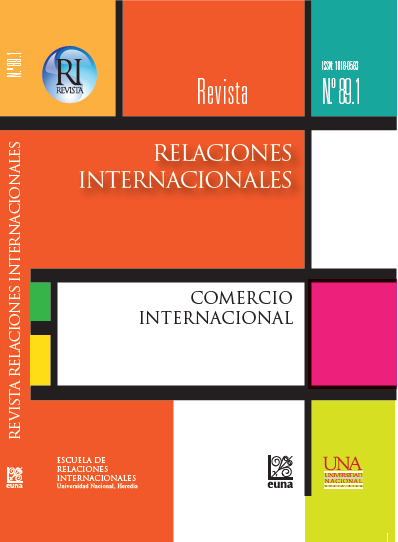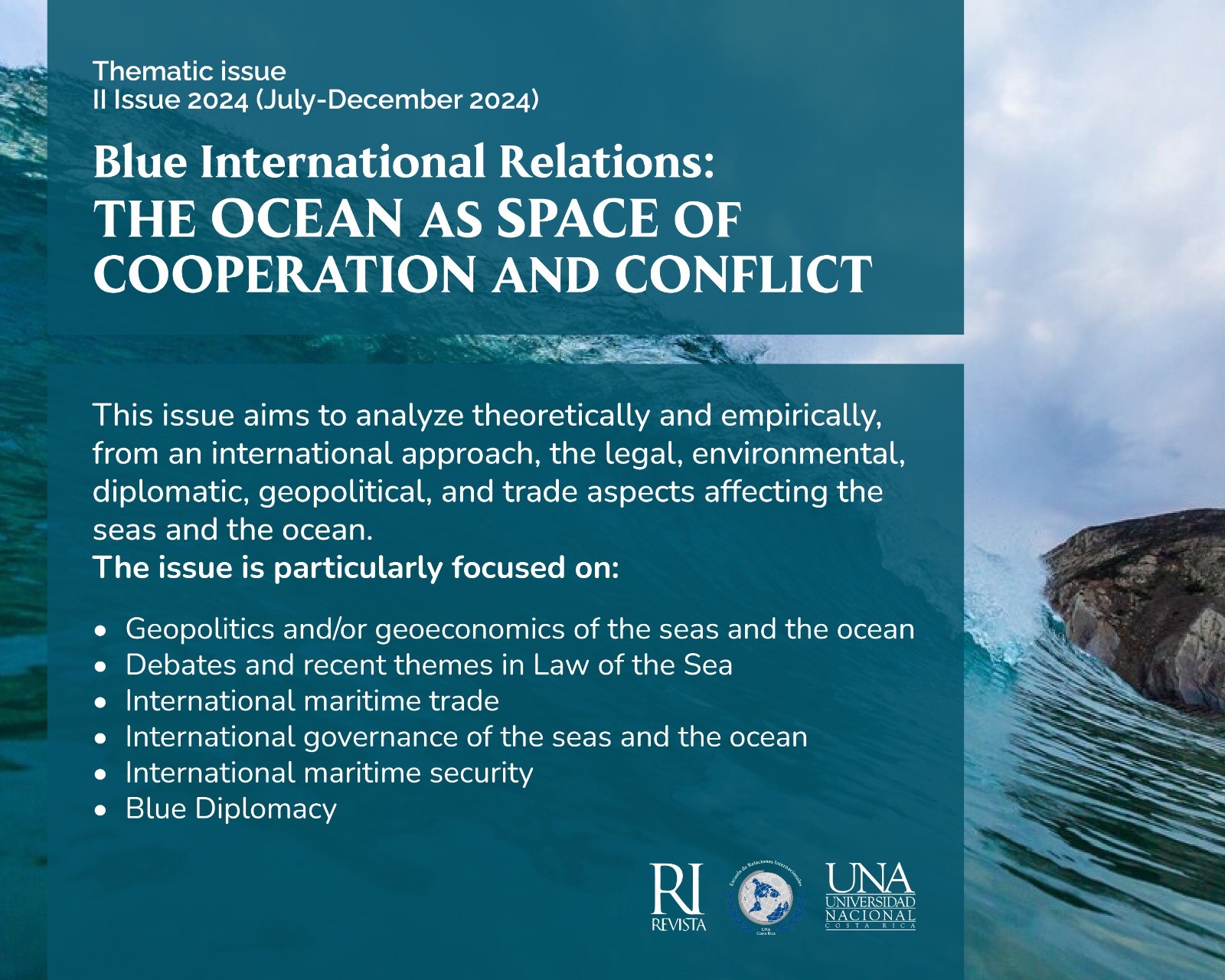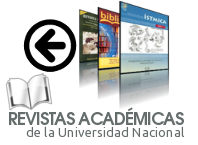Cuban-US relations: political needs behind the deal
DOI:
https://doi.org/10.15359/ri.89-1.2Keywords:
Cuba, United States, Agreement Negotiations, Pope Francis, Goals achievedAbstract
The agreement between Cuba and the United States, the late December 2014, where the resumption of relations between the two countries was agreed, after more than fifty years of interruption shows, a historic change and a reciprocal opportunity. This article analyzes the bilateral relations in political-historical terms and then review the events leading up to the agreement given that this involved a complex negotiation and effort of a number of heterogeneous actors that included from the Canadian government, officials from both sides and even Pope Francisco in the Vatican. Then, the article reflects on the reasons why the deal came and the goals that this has achieved. Finally, it presents outstanding issues to resolve on the bilateral agenda.References
Aguilera Peralta, G. (2009). Apuntes de una larga y complicada relación. Nueva Sociedad Democracia y Política en América Latina, nº 223, 1-5. Recuperado de http://nuso.org/articulo/apuntes-de-una-larga-y-complicada-relacion/?page=1
Amnistía Internacional. (2009). El embargo estadounidense contra Cuba. Su impacto en los derechos económicos y sociales. Amnistía Internacional, pp 1-29. Recuperado de http://www.amnestyusa.org/pdfs/amr250072009spa.pdf
Brinkley, Douglas. (1997). Democratic Enlargement: The Clinton Doctrine. Foreign Policy, 106, 111-127. DOI: http://dx.doi.org/10.2307/1149177
Bu Marcheco, J. (2014). Demandas de propiedad de Cuba y los Estados Unidos. Una revisión de la literatura. Social Science Research Network, 1-51. Recuperado de http://thecubaneconomy.com/wp-content/uploads/2014/03/Property-Issues-US-and-Cuba-A-Review-of-the-Literature.pdf
Castro Mariño, Soraya. (2002). U.S.-Cuban Relations during the Clinton Administration, Latin American Perspectives, 29(4), 47-76. DOI: http://dx.doi.org/10.1177/0094582X0202900404
Chaguaceda, Armando y Geoffray, Marie Laure. (2013). Las reformas en Cuba, qué sigue, qué cambia y qué falta. ASCE, 63-73. Recuperado de http://www.ascecuba.org/c/wp-content/uploads/2014/09/v23-chaguaceda.pdf
Congressional Digest (2013). Cuba and Humans Rigths. Assessment of Cuba's Record on Civil and Political Rights. Congressional Digest, 7-32.
De Onis, Juan. (2014). China’s latin Connection ¿Eclipsing the US?. En World Affairs, pp. 62-68.
Domínguez, J. (2010). La política exterior del presidente Barack Obama en América Latina. Foro Internacional, L(2), 243-267.
Gordon, J. (2012). The U.S embargo against Cuba and the diplomatic challenges to Extraterritoriality. The Fletcher Forum of World Affairs, 36(1), 63-79.
IISS. (2015). US and Cuba: Remaking of a relationship. IISS Strategic Comments, vol. 21.
Kaufman Purcell, S. (2003). La ley Helms-Burton y el embargo estadounidense contra Cuba. J7XLIII 3, 704-718. Recuperado de http://codex.colmex.mx:8991/exlibris/aleph/a18_1/apache_media/NVIURRSN5BIM86C6HF4E2SPKFYYI6S.pdf
Kornbluh, Peter. (2015). A new deal with Cuba. The Nation, pp 4-8.
Kryzanek, M. (1987). Intervencionismo, cooperación y revolución. Las estrategias políticas de Estados Unidos en América Latina. Buenos Aires. Grupo Editor Latinoamericano. Colección Estudios Internacionales.
Leogrande, William. (2015). Normalizing US–Cuba relations: Escaping the shackles of the past. International Affairs, 91(3), 473–488. DOI: http://dx.doi.org/10.1111/1468-2346.12282
Loredo Colunga, M. (2011). El cierre de Guantánamo. El difícil equilibrio entre voluntad política, legalidad y opinión pública. Revista para el análisis del derecho. Recuperado de http://www.raco.cat/index.php/InDret/article/viewFile/241334/323925
Mc Elwee. (2015). Obama credits pope’s help for Cuba thaw. National Catholic Reporter, pp 1.
Mesa-Lago, C. (2011). Las reformas de Raúl Castro y el Congreso del
Partido Comunista de Cuba: Avances, obstáculos y resultados. Documentos CIDOB. Recuperado de: http://www.isn.ethz.ch/Digital-library/Publications/Detail/?ots783=0c54e3b3-1e9c-be1e-2c24-a6a8c7060233&lng=en&id=135662
Milestones. (1998). The United States, Cuba, and the Platt Amendment, 1901. Office of Website Management. Bureau of Public Affairs. Recuperado de: https://history.state.gov/milestones/1899-1913/platt
Mujal Leon, E. y Langerbacher, E. (2009). Regime Change and Democratization in Cuba: Comparative Perspectives. Conference Papers- American Political Science Association, pp 1-44.
Pastor, Robert, A. (1996). The Clinton Administration and the Americas: The Postwar Rhythm and Blues. Journal of Interamerican Studies and World Affairs, 38(4), 99-128. DOI: http://dx.doi.org/10.2307/166260
Real Instituto Elcano. (2015). La política cubana de Estados Unidos. Real Instituto Elcano XX/2014. Recuperado de: http://www.realinstitutoelcano.org/wps/wcm/connect/cafbe380475f77879ce4be12dd3b68de/ARI11-2015-GarciaEncina-la-politica-cubana-de-EEUU.pdf?MOD=AJPERES&CACHEID=cafbe380475f77879ce4be12dd3b68de
Russell, R. y Tokatlian, G. (2008). Resistencia y cooperación: Opciones estratégicas de América Latina frente a Estados Unidos. En R. Lagos (Comp.), América Latina ¿integración o fragmentación? Buenos Aires: Edhasa.
Obama for America. (2008). The case of Cuba. A new partnership for the Americas. Obama for America, pp 1-13.
OEA. (1962). Resolución VI: Exclusión del actual gobierno de Cuba en el sistema interamericano”. Octava reunión de Consulta de Ministros de Relaciones Exteriores. Recuperado de: https://www.oas.org/consejo/sp/RC/Actas/Acta%208.pdf
Sánchez Ramirez, Pablo Telman. (2012). Recent Developments in Sino-Cuban Relations: Particularities and Advances. Latin American Policy, 3(2), 259–271. DOI: http://dx.doi.org/10.1111/j.2041-7373.2012.00073.x
Vallely, Paul. (2015). The pope’s Hail Mary in Havana may be only the start of the Vatican’s new, more audacious plans. Newsweek, pp.12-15.
Downloads
Published
How to Cite
Issue
Section
License

Revista de Relaciones Internacionales por Universidad Nacional de Costa Rica está bajo una Licencia Creative Commons Atribución-NoComercial-SinDerivar 4.0 Internacional








1.png)







3.png)
